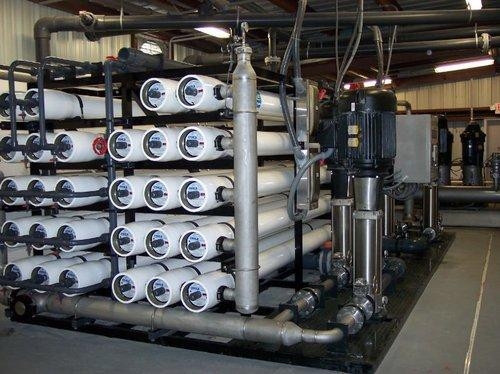Drinking Water Purification System Commercial
What is Reverse Osmosis Water Treatment?
Reverse osmosis (R/O) is a water treatment process in which water is forced through a semi-permeable membrane that has very small holes or "pores". Clean water passes through and impurities that are too big to pass through the membrane are left behind and flushed away.
Do I Need a Reverse Osmosis Water Treatment Machine?
It is presumed in this document that the water you are using meets all health regulations and is known to be safe. If your municipality or utility supplies your drinking water, it is likely that you do not need a reverse osmosis unit. Municipally supplied drinking water is microbiologically safe. It is treated to meet health and aesthetic requirements, and is subject to routine testing for microbiological contamination.
If you obtain drinking water from a private supply such as well, it may not be safe from microbiological, chemical, or other types of contamination. Drinking water from private sources should be tested periodically to determine if treatment is required; and, if so, for what specific contaminants or minerals.
Water chemistry is complex and no single water treatment device can be used to remove all types of substances from water. Different drinking water treatment devices have their own advantages and disadvantages. Each household must individually determine if there is a need for additional water treatment. If this is the case, determine the unit or combination of units best suited for your water needs.
How Does Reverse Osmosis Work?
Reverse osmosis systems purify water by forcing pressurized water through a very fine, plastic membrane. If the raw water being treated comes from a well or another private source, disinfection and pre-filters (to remove chlorine and/or particulates/sediment) may be needed in advance of the R/O unit to remove contaminants that can foul or damage the membrane.
Stages of reverse osmosis:
1)During the initial filtration stage, tap water or well water (pressurized by a booster pump) is passed through a particle filter (a pre-filter) that removes silt, sediment, sand, and clay particles that might clog the R/O membrane.
2)The water is then forced through an activated carbon filter that traps minerals and contaminants such as chromium, mercury, copper, chloramine and pesticides. It also removes chlorine, which is important, as chlorine will shorten the life of the membrane. /
3)Water is transferred under pressure into the R/O module, allowing only clean water to pass through the small pores in the membrane. Impurities unable to pass through the membrane are left behind and flushed down the drain.
4)Treated water is then sent to a storage tank.
5)Treated water is passed through an activated carbon filter before use to further improve the water's taste and smell.
Water that contains manganese, hydrogen sulphide or iron should be pre-treated to extend the life of the membrane. A dealer can recommend the pre-treatment needed.
How Do I Know What Size Unit to Buy? R/O units are rated according to the amount of treated water produced per day. For example, one type of unit produces 50 litres of treated water per day under its design conditions. Such a unit is generally rated with 60 psi water line pressure, a water temperature of 25° C (77° F), normal dissolved solids and 2 atmospheres of pressure. In reality, conditions frequently vary. Line pressure is often lower, water will frequently be colder than 25° C and backpressure in the storage tank will likely reduce the performance of the unit. Consequently, you should examine water conditions and buy a larger rated unit than needed if any of the above problems are noted

